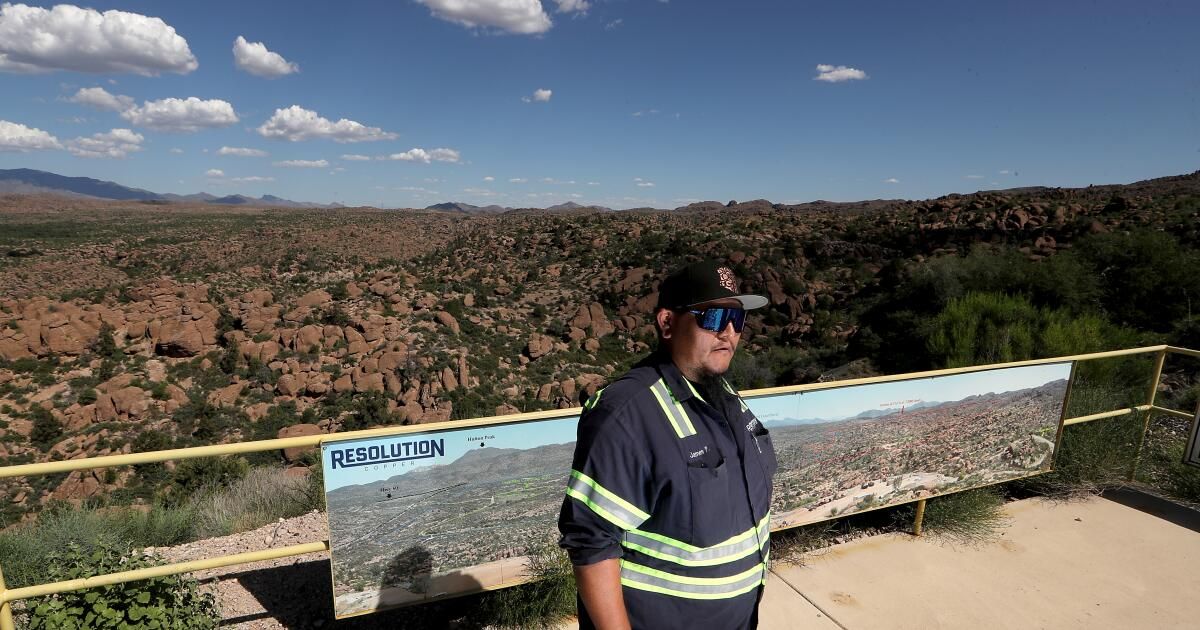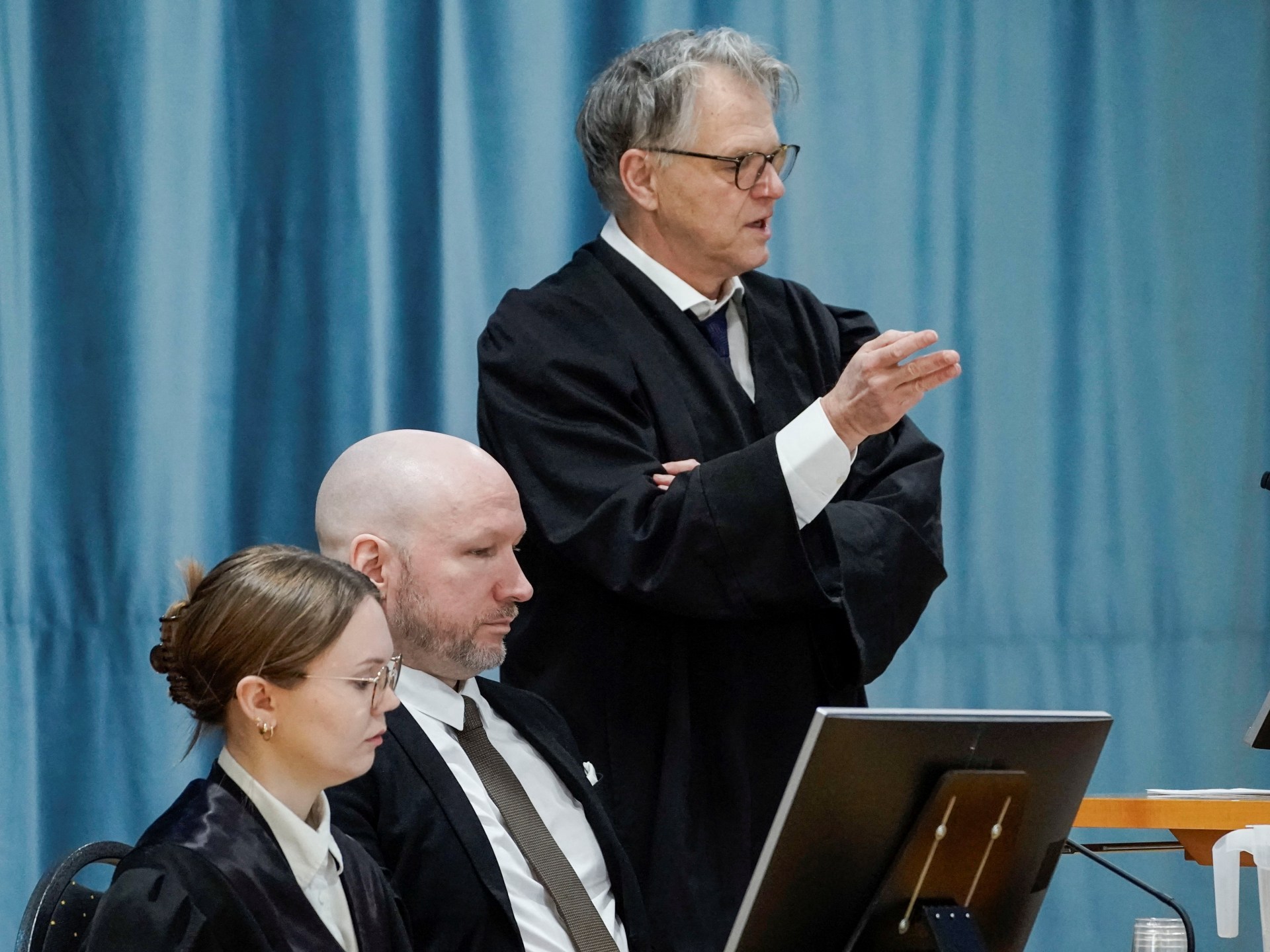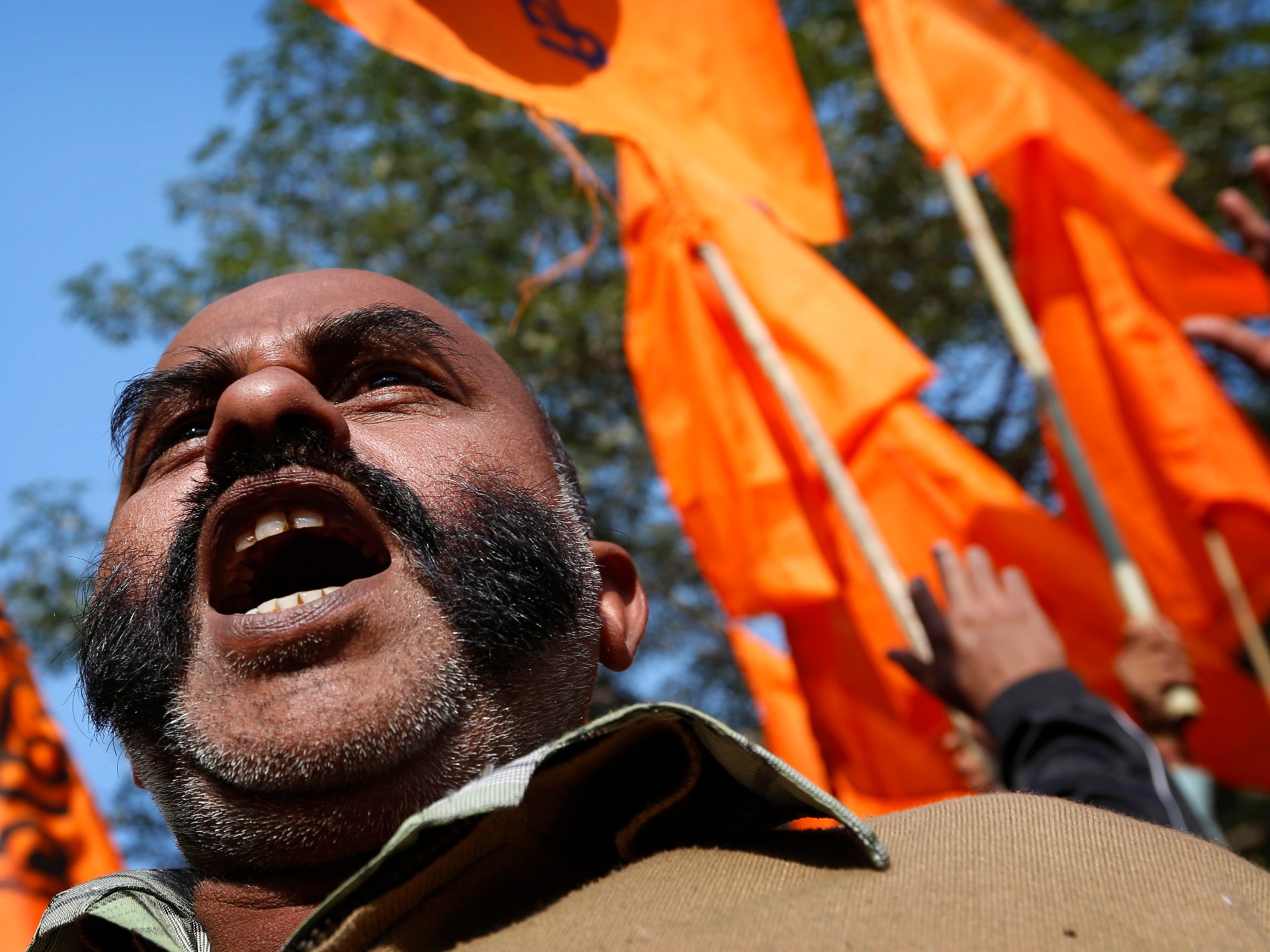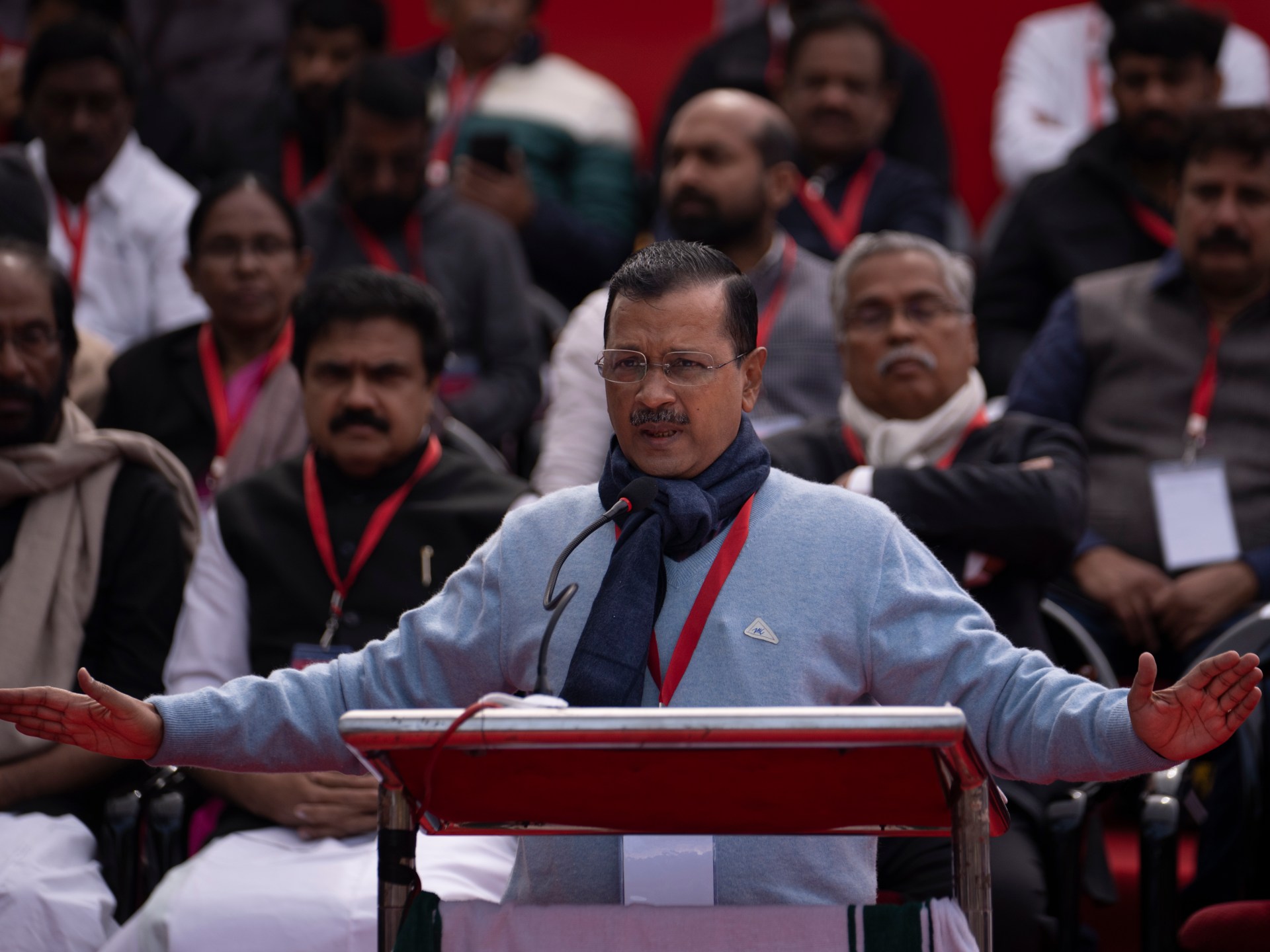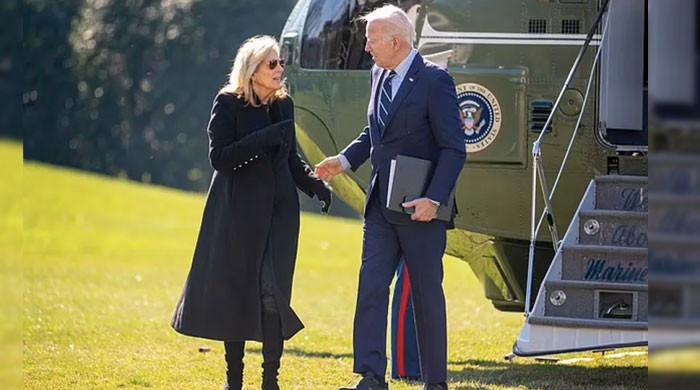The Supreme Court declined on Tuesday to listen to an Apache religious challenge to the construction of a mass copper mine in flat oak, a strip of federal lands intact in Arizona that the members of the tribe consider sacred and irreplaceable.
The decision, which leaves the decision of a lower court against the members of the tribe intact, marked an important loss for Apache Stronchold, a group that has long argued that the construction of the mine would violate their religious rights by permanently eliminating a unique sacred site used for the religious ceremonies of Apache.
It allows the United States forest service to advance with the plans to issue a final environmental impact report and listen to a last round of public comments before issuing a decision on the transfer of the land to Resolution Copper, a joint company of the multinational mining companies Rio Tinto and BHP Group.
Wendsler Nosie Mr., an old man from Apache and leader of the Apache strength, said in a statement that his group would continue to defend the land about 70 miles east of Phoenix, even through other judicial battles that challenge the mine and an appeal to Congress to intervene.
“We will never stop fighting, nothing will dissuade us to protect Oak Flat from destruction,” said Nosie. “We urge Congress to take decisive measures to stop this injustice while we advance in court.”
Vicky Pealy, general manager of Copper Resolution, said in a statement that the company was pleased that the lower court's decision is maintained.
“The resolution of the copper mine is vital to ensure the United States energy future, infrastructure needs and national defense with a domestic copper supply and other critical minerals,” Peagy said.
She said that the project has “significant support of the community” and “the potential to become one of the largest copper mines in the United States, add $ 1 billion a year to Arizona's economy and create thousands of local jobs in a region where mining has played an important role for more than a century.”
The majority of the Superior Court did not articulate a position in the case, but by refusing to listen to it on the side of a panel of judges very divided in the Court of Appeals of the 9th Circuit of the United States that declared itself against the Apache in March 2024.
However, Judge Neil M. Gorsuch wrote a dissent, united by his conservative partner, Judge Clarence Thomas, saying that the decision of the majority of not taking the case was “a serious mistake” and “one with consequences that threaten to reverberate for generations.”
Gorsuch said that “he had no doubt” that the Superior Court would have heard the case “if the government tried to demolish a historical cathedral” instead of an American native sacred site.
“Before the government's plan to destroy an old site of tribal worship, we don't owe the Apaches,” Gorsuch wrote. “They can live far from Washington, DC, and their history and their religious practices can be unknown to many. But that should not make any difference.”
Gorsuch said no one could “sensitive” argue against the importance of the case. “As the government has made it clear, it intends to clarify the way for copper resolution to begin the destruction of plain oak,” he wrote.
Judge Samuel A. Alito Jr., another conservative, did not participate in the conversation or decision in the case, although a reason was not provided.
The case touches a series of politicized issues, including the federal use of land, religious freedom and efforts to balance corporate interests with limited natural resources and environmental degradation. He has also confused traditional political divisions, even by joining conservative religious organizations and liberal environmental groups behind the Apache.
The fight between the Apache strength and the copper resolution has been ongoing for years.
Nosie and other members of the fortress have traveled through the country since the 9th circuit against them to raise awareness about their effort. Resolution Copper has continued billions of dollars in preparations for the mine in the surrounding area, where it has other mining operations, and has provided substantial financial support to local officials in the nearby city of Superior, Arizona, which is prepared with the influx of mining employees and their families and accompanying tensions in infrastructure.
In the center of the Apache challenge to the mine is its argument that the mine would not only hinder its ability to practice its religion, but would erase it.
Oak Flat, on the edge of the national fool forest, approximately one hour outside Phoenix and not far from the Indian reserve of San Carlos Apache, is used by the Apache for sweatshirts and for ceremonies of the age of majority known as dances for dawn, where girls are taken to the woman. The Apache believes that the Earth is blessed by its creator and his home on spiritual guardians similar to Los Angeles, and researchers have discovered that the site is archeologically significant not only for the Apache but for the Hopi tribes, O'ODham, Yavapai and Zuni.
(Paul Duginski / Los Angeles Times)
OAK FLAT is also on one of the non -exploited copper mineral deposits in the world, with sufficient estimated copper to supply up to a quarter of American copper demand. This demand has exploited with the proliferation of telecommunications networks, electric vehicles and other technologies that use the element.
The land in question had been under federal protection for decades, until the Republicans added a language that allowed the federal government to sell or exchange the land to mining companies in a mandatory passage law of defense law in 2014. Federal planning records show that extracting the deposit in the course of several decades of oak oak float, which the Apache call Two miles two miles.
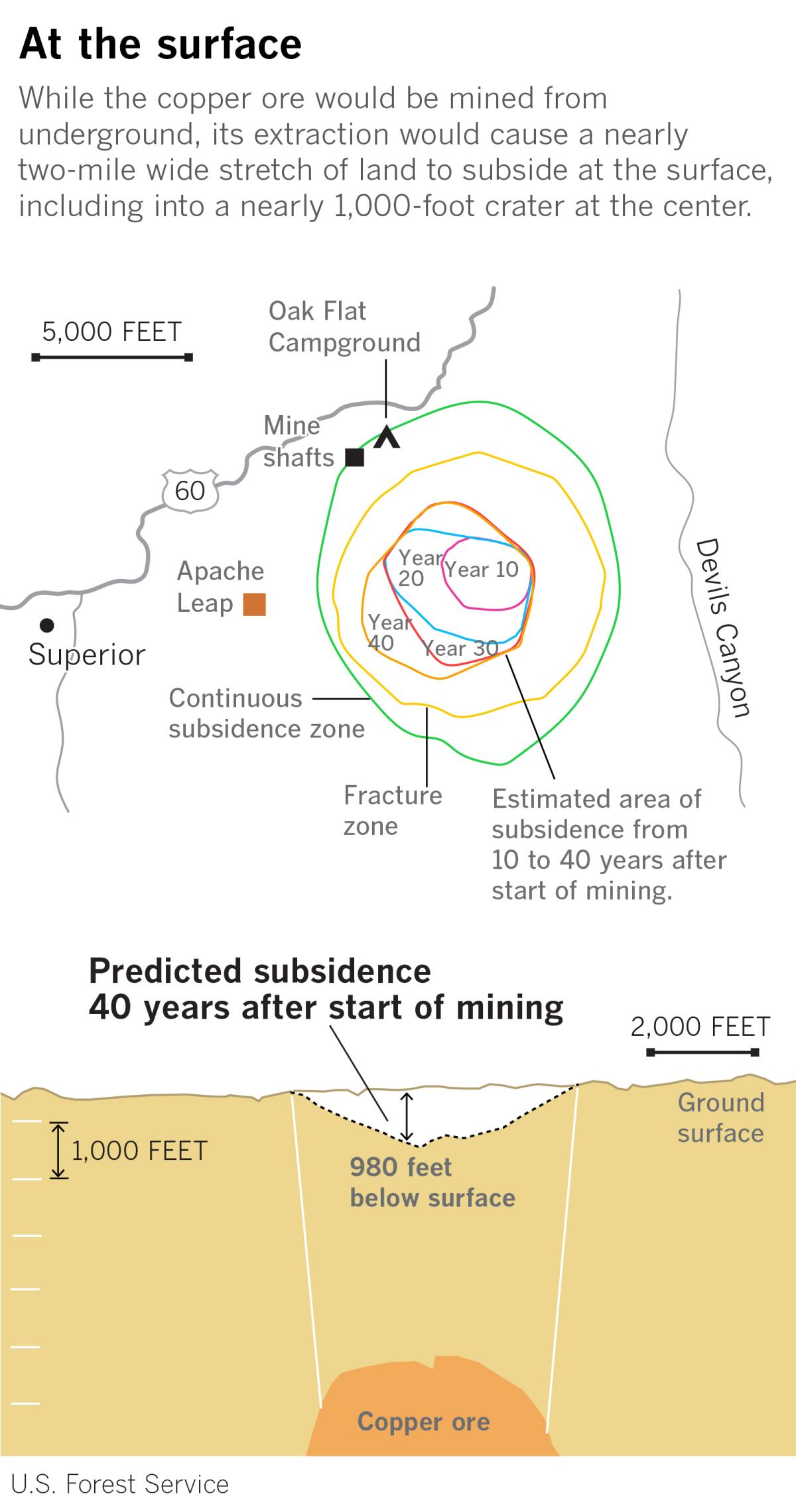
(Paul Duginski / Los Angeles Times)
Resolution Copper has said that he has worked closely with the American native advisors and worked to avoid important Apache sites in his planning, including Apache Leap near. Peagy said the company has been working for more than a decade to “preserve and reduce potential impacts on tribal, social and cultural interests”, and will continue to do so.
Apache Stribhold asked the Supreme Court to resume the case after a panel of 11 judges of the ninth circuit judges were divided 6-5 in favor of the right of the Federal Government to use their land according to choose. Such divisions in circuit decisions often receive the attention of the Superior Court, but not always.
Judge Daniel P. Collins, designated by President Trump, was the author of the majority. He wrote that the religious statements of Apache Stronghold failed because, although the transfer of federal government oak oak to the resolution of copper could interfere with the practice of the apaches of their religion, it did not “forced them” to act against their beliefs, “discriminate” or “penalize”, or deny them privileges to other cities.
He wrote that Apache strength had essentially asked the government to give them the “de facto” property of a “quite spacious tract” of public lands, which had to be rejected.
Collins joined Trump's four others and a designated President George W. Bush.
In his dissent on Tuesday, Gorsuch wrote that the 9th circuit “covers approximately 74% of all federal lands and almost a third of the native American population of the nation”, so its decision that the Government could destroy a sacred native site in federal lands would now govern the majority, if not all “Sacred Site” in the country in the country.
He said that the ruling would not only threaten the native sites, but all religious sites in federal lands, including many churches.
Luke Goodrich, lawyer for the strength of Apache and the main lawyer of the law firm of religious rights, Becket, said it was “difficult to imagine a more shameless attack against faith than to exploit the birthplace of the Apache religion in a huge crater”, and the “negative of the court to stop destruction is a tragic departure of his strong record of the religious freedom defender.”
The writer of Times, David G. Savage in Washington, contributed to this report.

